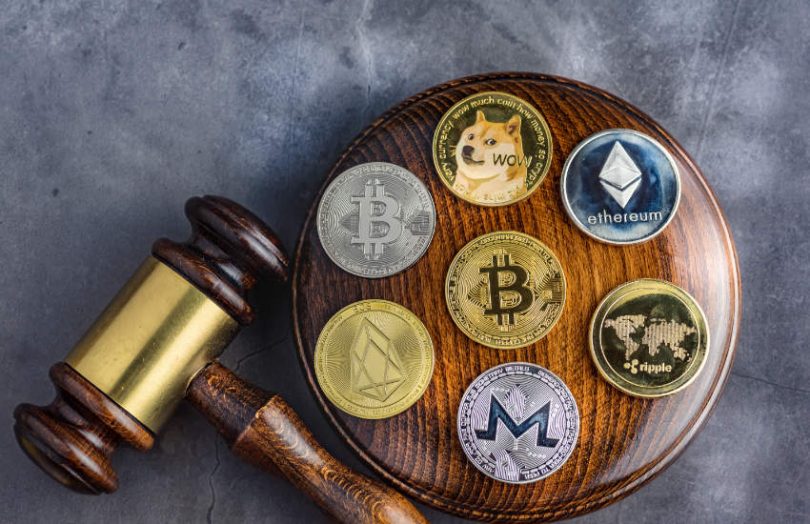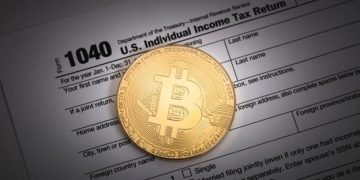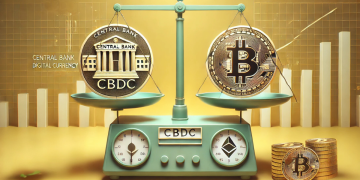The cryptocurrency landscape has grown from a niche experiment into a global financial ecosystem, valued at over a trillion dollars and influencing markets, industries, and societies worldwide. But with growth comes regulation, and different regions are approaching crypto oversight with varied philosophies, priorities, and enforcement levels. This has created a regulatory race, where the U.S., Europe, and Asia are not only setting rules but also competing for leadership in the digital asset space.
For investors, entrepreneurs, and policymakers, understanding how regulatory frameworks impact adoption of top-performing coins is critical. Will the future of Bitcoin, Ethereum, and emerging altcoins be shaped more by Wall Street’s cautious embrace, Europe’s harmonized frameworks, or Asia’s pragmatic innovation hubs?
This article dives into the U.S. vs. EU vs. Asia regulatory landscapes, their impact on investors, and how these rules influence market adoption levels.
The U.S.: A Patchwork of Uncertainty
The United States, home to Wall Street and some of the largest pools of capital in the world, holds enormous influence over crypto adoption. Yet its regulatory approach has been fragmented, often creating uncertainty for investors and businesses.
- Regulatory Agencies and Overlaps
- The SEC (Securities and Exchange Commission) argues that many crypto tokens are securities and should be regulated under securities law.
- The CFTC (Commodity Futures Trading Commission) considers Bitcoin and Ethereum commodities, giving it oversight over derivatives markets.
- The FinCEN (Financial Crimes Enforcement Network) imposes anti-money laundering (AML) requirements.
This overlapping jurisdiction often leaves projects in regulatory limbo.
- Investor Impacts
- U.S. investors have limited access to certain tokens and DeFi protocols due to compliance risks.
- Centralized exchanges like Coinbase and Kraken have faced lawsuits and enforcement actions, reducing token listings and restricting access.
- Despite hurdles, U.S.-based institutions like BlackRock and Fidelity are pioneering Bitcoin ETFs, legitimizing top performers like BTC and ETH.
- Adoption Levels
The U.S. remains a leader in institutional adoption of crypto but lags in fostering innovation due to regulatory uncertainty. Startups often relocate to friendlier jurisdictions, yet capital and investor interest remain strong.
The European Union: Harmonization Through MiCA
In contrast to the U.S., the European Union has sought to provide clarity and uniformity through its landmark regulation: MiCA (Markets in Crypto-Assets Regulation).
- Key Features of MiCA
- Introduces a single licensing regime across all EU member states.
- Sets standards for stablecoins, requiring reserves and transparency.
- Establishes consumer protections, disclosure requirements, and operational standards for exchanges and wallet providers.
- Investor Impacts
- MiCA offers regulatory clarity, giving investors confidence in compliance and asset protection.
- It lowers barriers for exchanges to operate across 27 countries, improving liquidity and token access.
- Institutional adoption is likely to accelerate, as asset managers see clearer rules for custody and reporting.
- Adoption Levels
- Europe is positioning itself as a hub for regulated crypto activity, particularly for stablecoins and tokenized assets.
- While retail adoption is moderate compared to Asia, institutional adoption could rise significantly under MiCA.

Asia: Pragmatism and Innovation
Asia is not a monolith; countries take vastly different approaches to crypto regulation, ranging from outright bans to full-scale integration. Yet collectively, Asia has been the most dynamic region for crypto innovation and adoption.
- China: Strict Bans but Blockchain Embrace
- China has banned crypto trading and mining but continues to develop its digital yuan (CBDC).
- Despite the ban, many Chinese investors still access global markets through workarounds, influencing liquidity.
- Singapore: Regulatory Clarity and Innovation Hub
- Singapore’s Monetary Authority (MAS) has positioned the country as a fintech hub with clear licensing for exchanges.
- It balances strict AML compliance with openness to blockchain startups.
- Many global crypto firms establish Asian headquarters in Singapore.
- Japan and South Korea: Retail Adoption Leaders
- Japan recognizes Bitcoin as legal tender for transactions and has a strong regulatory framework for exchanges.
- South Korea’s retail adoption is among the highest globally, with strong trading culture and strict AML rules.
- Investor Impacts
- Asian investors often enjoy broader retail access to top-performing tokens.
- Local exchanges thrive due to high participation, though regulation can be strict (e.g., South Korea’s KYC and reporting standards).
- Adoption Levels
- Asia leads in retail adoption and innovation.
- Countries like Singapore and South Korea are incubating blockchain gaming, DeFi, and metaverse tokens.
- Despite China’s ban, Asian capital continues to flow into global crypto markets.
How Regulation Shapes Top Performer Adoption
- Bitcoin (BTC)
- U.S.: Institutional embrace via ETFs is strengthening Bitcoin’s status as digital gold.
- EU: Clarity under MiCA encourages broader custodial and payment adoption.
- Asia: Retail trading keeps liquidity high, despite restrictions in China.
- Ethereum (ETH)
- U.S.: Legal debates around ETH as a commodity or security create uncertainty, but institutions continue to explore ETH ETFs.
- EU: MiCA fosters clarity, supporting Ethereum’s role in tokenization and DeFi.
- Asia: Ethereum is widely integrated into NFT and gaming ecosystems.
- Stablecoins (USDT, USDC, etc.)
- U.S.: Regulatory pressure on issuers may limit growth but legitimizes stablecoins in payments.
- EU: MiCA sets strict reserve requirements, potentially favoring regulated stablecoins.
- Asia: Stablecoins remain critical for retail trading and cross-border transactions.
- Emerging Coins
- U.S.: Many altcoins face SEC scrutiny, limiting listings.
- EU: Harmonized licensing may increase access for investors.
- Asia: Speculative retail markets boost adoption of new tokens, especially in gaming and DeFi.
The Investor’s Perspective: Opportunities and Risks
- Opportunities
- Regulatory Arbitrage: Investors and firms may move capital to friendlier jurisdictions.
- Institutional Growth: Clearer regulation (U.S. ETFs, EU MiCA) enhances institutional participation.
- Innovation Hubs: Asia remains a hotbed for experimenting with new models like play-to-earn and tokenized finance.
- Risks
- Regulatory Crackdowns: Sudden enforcement can delist tokens or block access.
- Fragmentation: Different global rules complicate cross-border participation.
- Uncertainty: Lack of consensus, especially in the U.S., poses risks for altcoins.
Conclusion: Who Wins the Regulation Race?
The global regulation race is not about one region winning but about how different approaches shape adoption of top-performing coins.
- The U.S. may dominate institutional adoption through ETFs and capital markets but risks stifling innovation.
- The EU is building a harmonized framework that could make it the most predictable environment for crypto businesses.
- Asia continues to lead in retail adoption and innovation, setting cultural and technological trends in Web3.
For investors, the key is to understand how regulation in each region affects liquidity, accessibility, and risk. The winners in the crypto market will be those who can navigate these differences and adapt to a rapidly evolving regulatory landscape.































